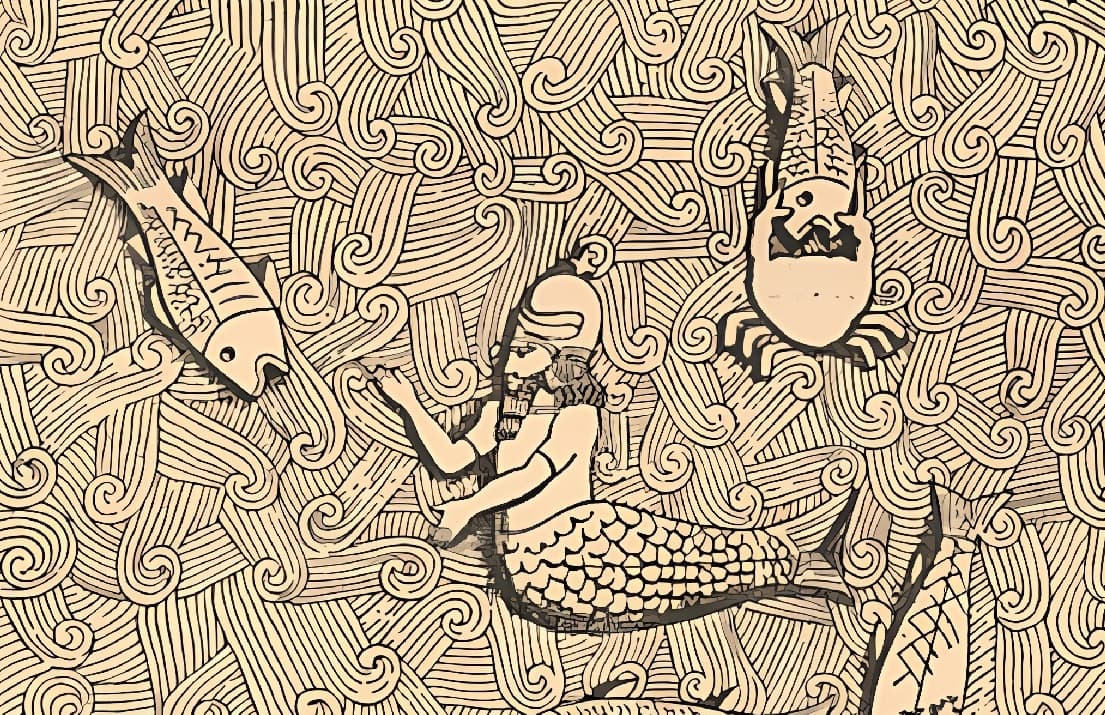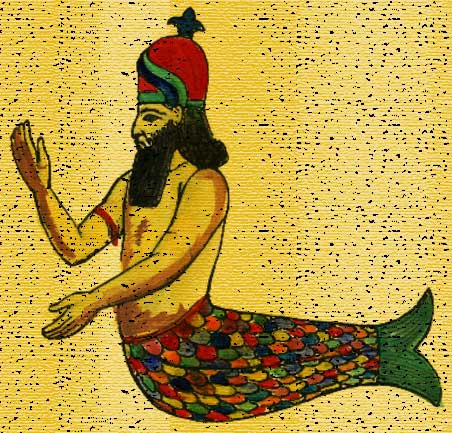
Table of Contents
Among the influential deities of ancient times, Dagon was a major god for the Philistines as well as for other groups of people and religions. His worship and domains strengthened throughout the millennia and spread to several countries. Dagon played many roles in different contexts, but his main role was as an agriculture god.
Who Was Dagon?

Dagon was the Semitic god of agriculture, crops, and the fertility of the land. His worship spread through several regions of the ancient Middle East. In Hebrew and Ugaritic, his name stands for grain or corn, symbolizing his tight connections to the harvests. Some sources propose that Dagon was the inventor of the plow. Apart from the Philistines, Dagon was a central god for the Canaanites.
Name and Associations
Several sources differ about the origin of his name. To some, the name Dagon comes from Hebrew and Ugaritic roots. Yet he has associations with the Canaanite word for fish as well, and several of his depictions show him as a half-fish half-man god. His name also has connections to the root dgn, which had to do with the clouds and the weather.
Origins of Dagon
The origins of Dagon go back to 2500 BC when people from Syria and Mesopotamia started his worship in the ancient Middle East. In the Canaanite pantheon, Dagon was one of the most powerful gods, only second to El. He was the son of the god Anu and presided over the fertility of the land. Some sources propose that the Canaanites imported Dagon from the mythology of Babylonia.
Dagon started losing importance for the Canaanites, but he remained a major god for the Philistines. When people from Crete arrived in Palestine, they adopted Dagon as an important deity. He appears in the Hebrew scriptures as a primordial deity of the Philistines, where he was associated with death and the underworld.
Dagon’s consort was known as Belatu but he’s also associated with the goddess Nanshe, who was a fishing and fertility goddess. Dagon is also associated with the goddesses Shala or Ishara.
Dagon and the Ark of the Covenant
According to the scriptures, the Philistines stole the Ark of the Covenant from the Israelites, the tablet which held the Ten Commandments. The Israelites had carried it through the desert for 40 years as they wandered around. When the Philistines stole it, they took it to the temple of Dagon. According to the Hebrew Bible, on the first night that the Ark was placed in the temple, the statue of Dagon that was in the temple fell. The Philistines thought it was nothing but a misfortune, so they replaced the statue. The following day, the image of Dagon appeared decapitated. The Philistines took the Ark to other cities, where it also caused different problems. In the end, they returned it to the Israelites with other gifts.
In the Bible, this is mentioned thus:
1 Samuel 5:2-5: Then the Philistines took the ark of God and brought it to the house of Dagon and set it by Dagon. When the Ashdodites arose early the next morning, behold, Dagon had fallen on his face to the ground before the ark of the Lord. So they took Dagon and set him in his place again. But when they arose early the next morning, behold, Dagon had fallen on his face to the ground before the ark of the Lord. And the head of Dagon and both the palms of his hands were cut off on the threshold; only the trunk of Dagon was left to him. Therefore, neither the priests of Dagon nor all who enter Dagon’s house tread on the threshold of Dagon in Ashdod to this day.
Worship of Dagon
Although Dagon was an important deity in the ancient Middle East, his central place of worship was Palestine. He was a major god for the Philistines and a fundamental figure in their pantheon. Dagon was an essential god in the Palestine cities of Gaza, Azotus, and Ashkelon.
Since the Philistines were the main antagonists in the stories of the Israelites, Dagon appears in the Bible. Outside Palestine, Dagon was also an essential god in the Phoenician city of Arvad. Dagon had several other names and domains depending on his place of worship. Apart from the Bible, Dagon also appears in the Tel-el-Amarna letters.
Dagon as the Fish God
Some sources believe that Dagon was the first mermen to exist. The tradition of deities associated with fish spread through many religions. Christianity, Phoenician religion, Roman mythology, and also Babylonian gods were associated with fish symbolism. This animal represented fertility and goodness as Dagon did. In this sense, the most famous depictions of Dagon are in his role of Fish God.
Dagon in Modern Times
In modern times, Dagon has influenced pop culture through games, books, movies, and series.
- Dagon is a main character in the game Dungeons and Dragons as the demon lord.
- In the movie Conan the Destroyer, the antagonist is based on the Philistine god.
- In the series Buffy the Vampire Slayer, the Order of Dagon also delivered an important role.
- He appears in several other TV shows and movies like Guillermo del Toro’s The Shape of Water, Blade Trinity, Supernatural, and even the kids show Ben 10.
In literature, perhaps his most important influence was in H.P Lovecraft’s short story Dagon. It’s believed that several characters by George R.R. Martin in A Song of Ice and Fire derive from this short story and thus from Dagon. Apart from this, Dagon appears in the works of Fred Chappell, George Eliot, and John Milton. Nonetheless, most of these appearances differ vastly from his original role in the Philistine pantheon.
In Brief
Dagon was a significant deity of ancient times and was worshipped in several different cultures. His influence spread from the early civilizations of the Middle East to the Philistines, as the god of fertility, goodness, and agriculture. Even today, Dagon influences society through his different appearances in pop culture.








